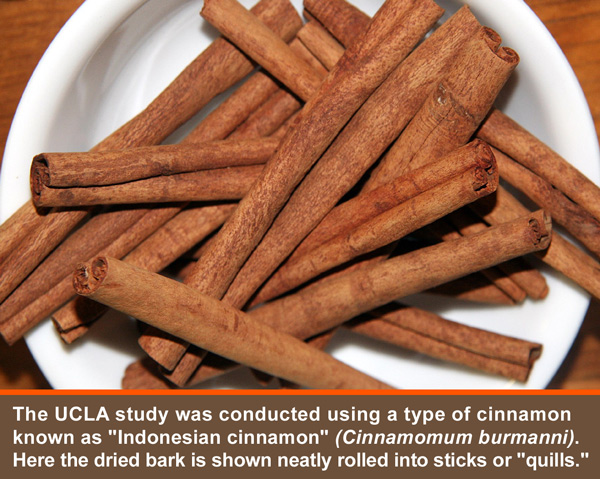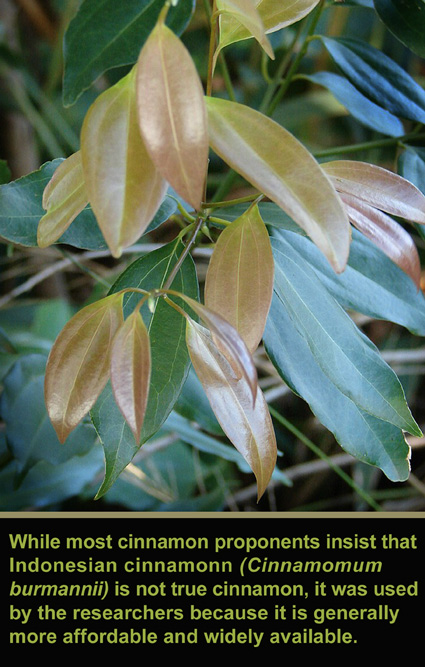According to a new study, the popular spice cinnamon offers hope for obese and overweight individuals in warding off diabetes.
The small study, conducted specifically on prediabetic individuals, corroborated earlier studies highlighting cinnamon’s ability to reduce blood glucose in high-risk individuals.
Prediabetes is defined as having fasting plasma glucose between 100–125 mg/dL or hemoglobin A1c concentrations between 5.7–6.4 % (39–47 mmol/mol).
The study, conducted at the University of California – Los Angeles (UCLA), was published in the American Journal of Clinical Nutrition in January 2024.
Study Details
The randomized, double-blind, placebo-controlled crossover trial was completed with 18 participants who were overweight or obese, and were found to have prediabetes following a metabolic screening.
Following a two-week run-in period of maintaining a diet low in polyphenols and fiber, participants were randomly assigned to take four grams of cinnamon per day or a placebo for four weeks. Following this four-week period, participants underwent a washout period before the control and treatment groups switched for an additional four-week period.
During the study, all participants underwent continuous glucose monitoring. In addition, oral glucose tolerance testing took place immediately following ingestion of cinnamon or placebo to assess any acute effects—both at baseline and at the end of each intervention phase.
Positive findings
The complete study included 694 follow-up days with an impressive 66,624 “glucose observations” in total.
At the trial’s conclusion the group taking cinnamon supplements had significantly lower average glucose concentrations when compared to the placebo group.
Specifically, the cinnamon group recorded peaks of 9.56 ± 9.1 mg/dL, compared to the placebo group’s 11.73 ± 8.0 mg/dL.
The researchers wrote that the glucose-lowering effect of cinnamon may be explained by its unique bioactive compounds and high polyphenol content.
Cinnamon contains cinnamaldehyde, proanthocyanidins, coumarin, catechins, trans-cinnamic acid and flavones.
While the researchers noted that polyphenols “improve insulin sensitivity by activating the insulin receptor,” they reiterated that it is still unknown which specific bioactive compounds—or combination of compounds—should receive the primary credit for the observed beneficial effects.
The researchers also noted that another potential explanation for the glucose-lowering effect of cinnamon is that the potent spice positively impacts the population of intestinal microbiota.
In fact, the researchers had previously conducted in vitro studies that demonstrated cinnamon’s ability to enhance beneficial bacterial growth.
Cinnamon basics
Cinnamon is a commonly used spice produced from the dried inner tree bark of several species within the Cinnamomum genus. The genus has 250 different species, but only a few are commercially cultivated to produce the cinnamon spice.
Cinnamon constituents have been used in herbal-traditional medicine systems for thousands of years. It has an extensive history in China, India, Egypt and Persia (Iran). It is also one of the 50 Fundamental Herbs of the Traditional Chinese Medicine system.
In addition to providing anti-bacterial and anti-inflammatory benefits, cinnamon has historically been used to treat respiratory, digestive and menstruation issues.
As a nutritional supplement in western countries, cinnamon is used to support healthy blood pressure and glycemic responses.
Was the most effective cinnamon used?
Ironically, even though the study demonstrated the effectiveness of cinnamon, many cinnamon aficionados would argue that the study would have seen even more favorable results if researchers had used “Ceylon cinnamon.”
Ceylon cinnamon, or Cinnamomum verum, is known for its origins in Sri Lanka—formerly Ceylon—and is considered to be “true cinnamon.”
Ceylon cinnamon is more expensive and has a more robust taste—and, according to many experts, greater health benefits. The common (or “generic”) cinnamon that is most readily available in international commerce is derived from four other Cinnamomum species. They are more correctly referred to as “cassia” cinnamons.
This list of four cassia cinnamons includes C. burmannii—the Indonesian cinnamon used in the current study.
Regardless of the cinnamon type used, the UCLA researchers felt their findings were conclusive. “Our study suggests that adding cinnamon, a substance naturally rich in polyphenols, to daily diets may have beneficial glycemic effects in prediabetes,” the researchers wrote in the study conclusion.
Optimal Health Systems products that incorporate cinnamon include: Optimal Complete Nutrition Plus and Optimal Fruit and Veggie Plus.
Cinnamon is also part of the Cultured Media Blend that is used for absorption optimization in other products: Opti-Adrenal, Opti-Brain, Optimal Calm, and Natural Z Pak.
– – –



